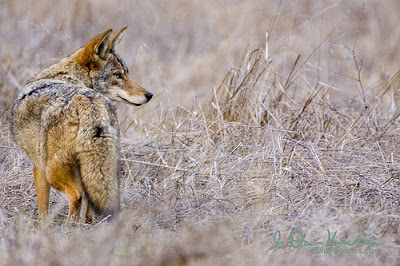In response to Mark Holyoak's (July 18) guest column, it is important to note that the Rocky Mountain Elk Foundation and Montana Fish, Wildlife and Parks are not the only folks with access to science and biology.For every so-called scientific study that attempts to give credence to the extreme predator "management" policies and anti-wolf rhetoric currently being pushed by the likes of RMEF CEO and President David Allen, opposing studies can be found, legitimate in scholarship. There's a reason the family of Olaus Murie ("the father of modern elk management") has withdrawn support from RMEF, citing RMEF's "unscientific and untenable anti-wolf policies" in their open letter this past week.
As consumers of information, we can better serve ourselves by seeking out studies by independent wolf biologists, as opposed to studies by "experts" who are on the payrolls of special interest groups. The fact that individuals or organizations have an opinion does not preclude us or them from having experience or knowledge based on science and biology. Simply stated, just because we disagree with you does not make us wrong.
Wolf caught in a leg hold trap
Montana's wolf management plan may have been devised a decade ago, but things have changed. Thankfully, we have evolved and continue to do so. As a society, we acknowledge that animals are sentient beings, capable of many of the same emotions as ourselves. The trapping component of said management plan has no place in our society – this is the 21st century.
As a veterinary technician who has seen these injuries firsthand, I challenge anyone to tell me that animals do not suffer when they are caught in any of the types of traps that litter our public lands. Animals caught in traps can languish for days; starving, unable to defend themselves as they fall victim to predator attacks, waiting for their killers to finally check their traplines; waiting to be strangled, stomped on the chest, beaten, injected with household chemicals – just to preserve the hide for a few bucks. This is reality, not a "knee-jerk" emotional reaction. This is the fate of not just endangered and/or struggling species such as wolverines and fishers, but your dog or cat, or any other animal unfortunate enough to come across a trap. No matter how you feel about wolves, no creature deserves to die in this way.
Coyote caught in a leg hold tray
Let's look at the numbers.
• For every one target animal, there are at least two non-target animals trapped and discarded due to injury.
• There are more than 800,000 reported trapping deaths since 1996 in Montana (many are never reported).
• Trapping is practiced by less than 2 percent of Montanans.
• Trapping brings to Montana revenue of less than $100,000 – wildlife viewing brings in millions of dollars.
Also consider:
• There is no trap check requirement in Montana; animals can be left in traps for days, suffering from pain, cold, hunger, thirst and vulnerable to predator attacks.
• Hunting ethics would not tolerate the torture of an animal, or allow it to suffer for days.
• Trapping is not fair chase.
• Trapping is cruel and indiscriminate.
• Trapping can't guarantee a clean kill.
• Trapping promotes the commercialization of publicly owned wildlife.
• With thousands of traps set on public lands, and now another layer of larger and potentially lethal traps for wolves, no one really can know the sheer number of traps on our public lands, or the actual number of animals caught or killed.
• Larger traps have the potential to become a public safety issue.
Lynx caught in a leg hold trap
Please, don't make the argument that other states use trapping in their arsenal of management tools. Just because someone else does it, doesn't make it right. Many individual ranchers, towns and cities are endorsing non-lethal alternatives to predator management, as they acknowledge the role of the predator in sustaining a healthy ecosystem.
And to those who trap, please don't tell me that trapping gives some kind of spiritual connection to the victim in your trap. And don't tell this Montanan that I don't have a spiritual connection to wildlife because I prefer to see them alive in their environment. Take it from a former trapper:
"The days of trapping are over. It is now time to preserve Montana's wildlife." – Chuck Jonkel, wildlife biologist and former trapper.
April Lane is a veterinary technician and supporter of Footloose Montana, a nonprofit organization that promotes trap-free public lands in Montana.



